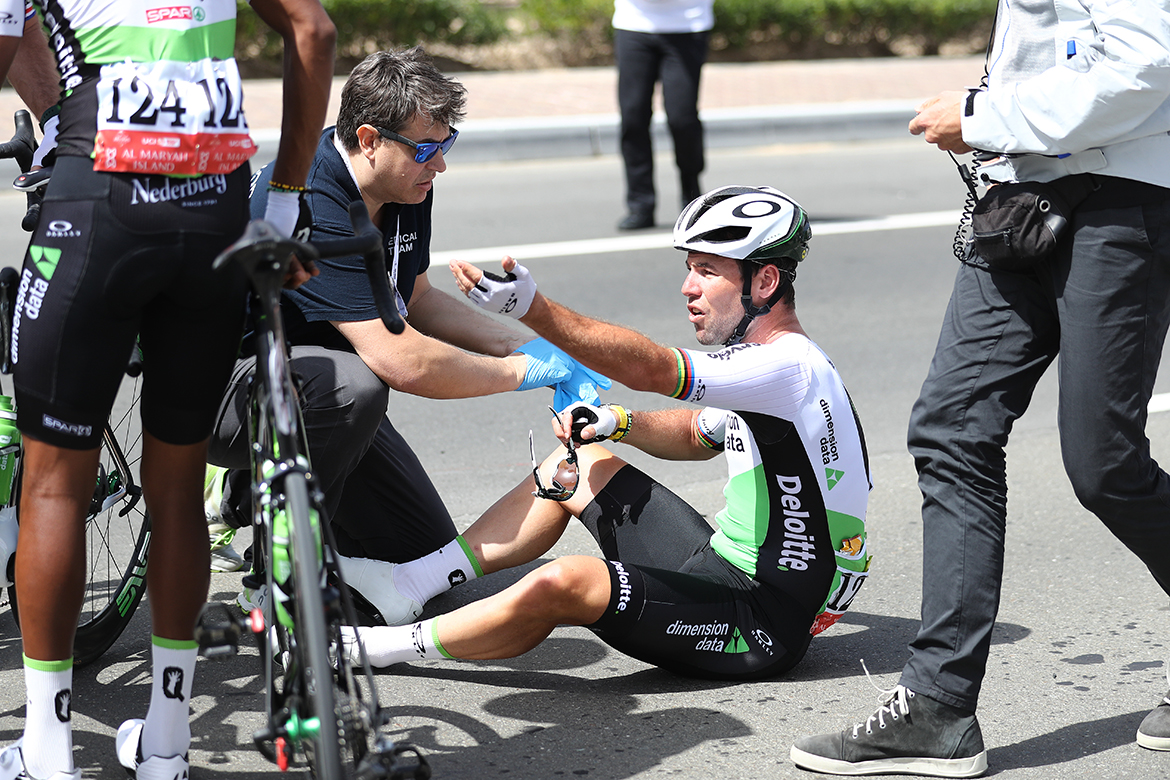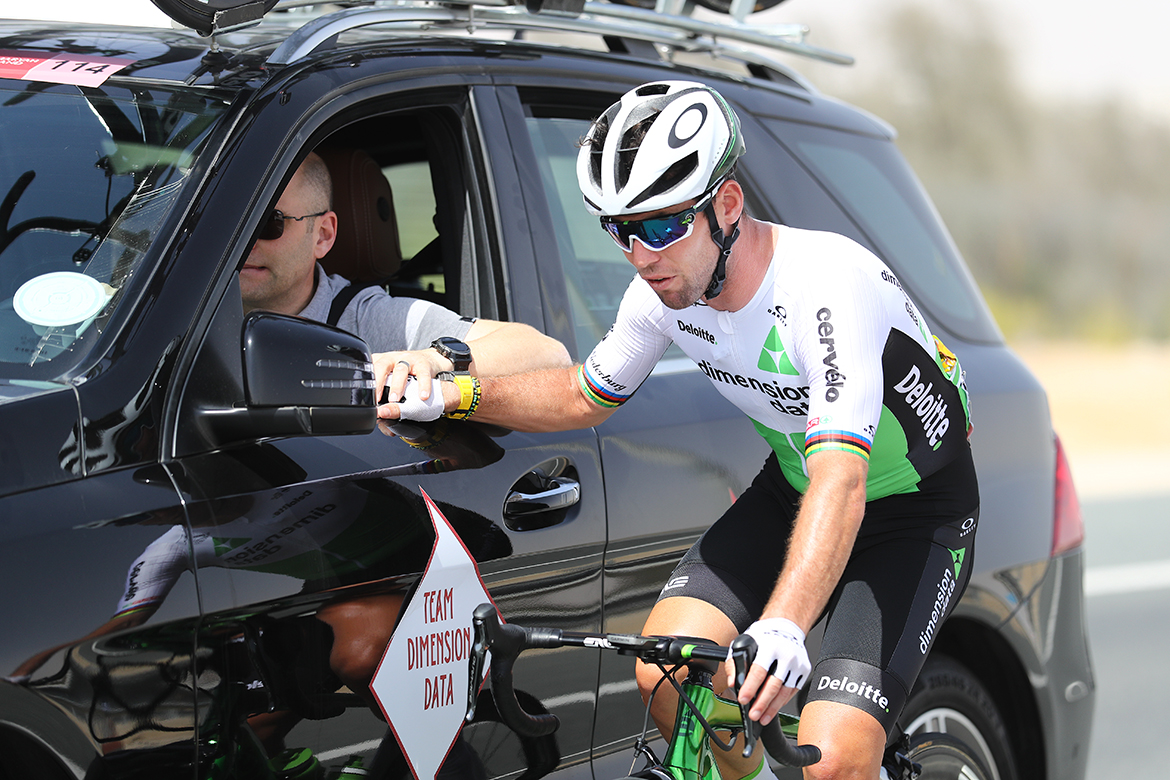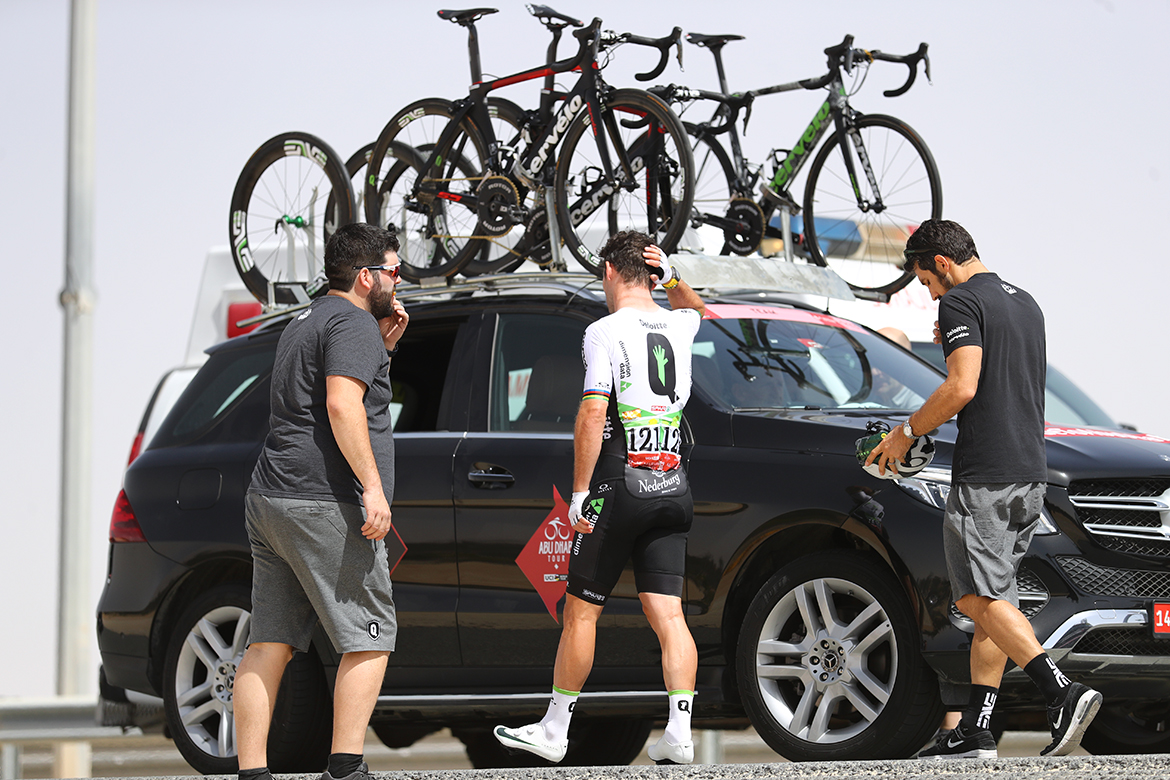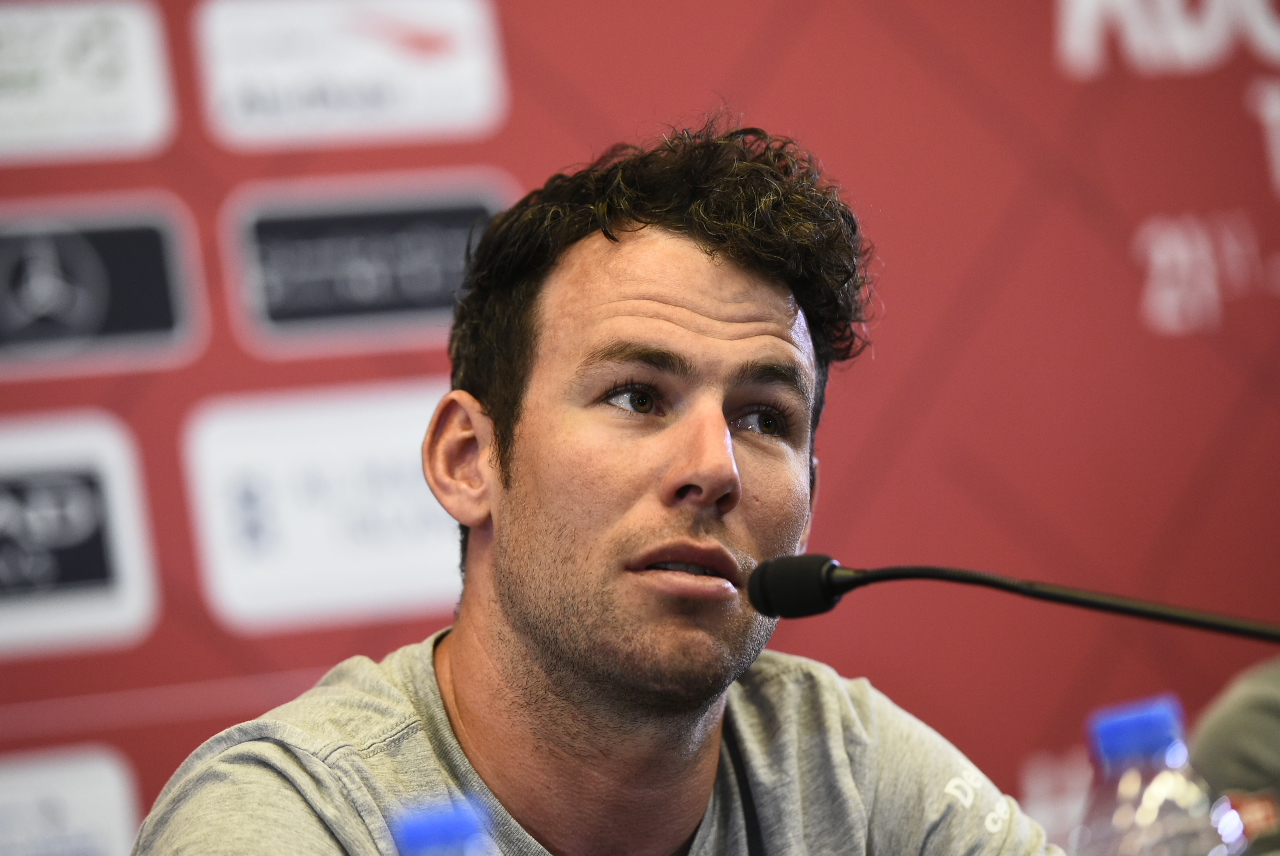Mark Cavendish on course for Tirreno-Adriatico and Milan-San Remo despite Abu Dhabi crash
Dimension Data doctor on the concussion diagnosis in cycling




Mark Cavendish (Dimension Data) remains likely to participate at both Tirreno-Adriatico and Milan-San Remo despite suffering a concussion when he crashed in the neutralised zone of stage 1 of the Abu Dhabi Tour.
Although Cavendish remounted and returned to the peloton, his injuries were such that he was forced to abandon after five kilometres and travel directly to hospital, where he was diagnosed with concussion and whiplash injury to his neck. As per normal protocol following a concussion, Cavendish was unable to fly in the 48 hours following the crash, but he is expected to leave Abu Dhabi on Friday or Saturday.
"This morning Mark still had some concussive symptoms," Dimension Data doctor Adrian Rotunno told Cyclingnews in Abu Dhabi on Friday. "He's still got a headache. His neck is very stiff and his balance is still a little bit off, which are all classic symptoms of a concussion, so we're just monitoring him and keeping him in a cool, calm quiet environment to leave him recover. We'll send him home either later today or tomorrow to fully recover."
The Abu Dhabi Tour was to be the third installment of Cavendish's miniature 'Grand Tour' of the Middle East, following his participation at the Dubai Tour and the Tour of Oman. Tirreno-Adriatico, which gets underway on March 7, is the next race on the Manxman's schedule, and Rotunno said that his participation is more likely than not at this juncture.
"It's more likely that he will be [able to ride Tirreno-Adriatico], but the key is managing it properly now so that he can be ready, otherwise the symptoms can go on, sometimes for months. So the key is to manage it properly now so that he can recover for San Remo," Rotunno said.
"In the acute phase, you have to let the rider rest and not to have over-stimulation in any form, and that includes exercise, sunlight, screen time and television time. The normal protocol is at least a week off training to let the brain fully recover. Provided he's got no more symptoms, then he can start to build up in a gradual way, and get back to normal again in a week. If he passes his neuro-cognitive testing, he should be back within 10 days."
Rapid diagnosis
While the dangers of competing with a concussion have been increasingly highlighted in contact sports such as American football and rugby in recent years, the issue has only recently been afforded the attention it deserves in cycling.
The latest race content, interviews, features, reviews and expert buying guides, direct to your inbox!
Cycling is littered with stories of riders continuing in races despite displaying obvious symptoms of concussion, and there has been an historic and wholly mistaken tendency to laud such episodes as feats of courage rather than as acts of folly. The alarming footage of Toms Skuijns taking unsteadily to his feet after his crash at last year's Tour of California served to focus minds on the issue, and perhaps help to accelerate a change in the culture of diagnosing and treating concussion in the sport.
"Traditionally, concussion has been very poorly diagnosed and managed in cycling. The guys are going at breakneck speed and the helmets are not all that protective," Rotunno said. "Our stance is that even if it's only a suspected concussion, we would rather remove the rider, and we err on the side of caution rather than putting him back in the race. A concussed rider is a danger to himself and to the rest of the riders as well. Evidence has shown that it's very similar to riding with alcohol."
The problem inherent in cycling, however, is that there is precious little time for doctors to diagnose a rider on the roadside while the peloton speeds out of view up ahead. While an NFL player can sit out a series of plays and undergo cognitive tests on the side-line before possibly returning to the game, there is no such fall-back for a cyclist. The race moves on, and the decision must be made quickly.
The rider's own instinct, too, is usually to get straight back on the bike. Indeed, in Abu Dhabi, Cavendish re-joined the peloton and rode on for five kilometres before dropping back for a diagnosis from Rotunno and abandoning the race.
"It's very difficult because you don't have the time to diagnose it. The protocol is a very quick set of tests that we do, and Mark was already showing signs of failing some of those tests," Rotunno said. "There are certain things you need to look for, like helmet damage, and respond quickly. The problem is you've got to make a quick decision, and that can put the medical team in a tight spot sometimes, because people might question it. But with objective tests we do, if a rider fails one of them, the protocol is to remove him."
An early-season race like the Abu Dhabi Tour is one thing, of course, and the Classics and the Tour de France quite another, but for Rotunno, the principle remains the same. "There's always pressure to perform, but the health of the rider is paramount," he said. "It's always safety first."

Barry Ryan was Head of Features at Cyclingnews. He has covered professional cycling since 2010, reporting from the Tour de France, Giro d’Italia and events from Argentina to Japan. His writing has appeared in The Independent, Procycling and Cycling Plus. He is the author of The Ascent: Sean Kelly, Stephen Roche and the Rise of Irish Cycling’s Golden Generation, published by Gill Books.